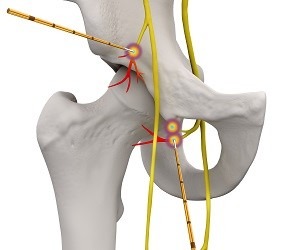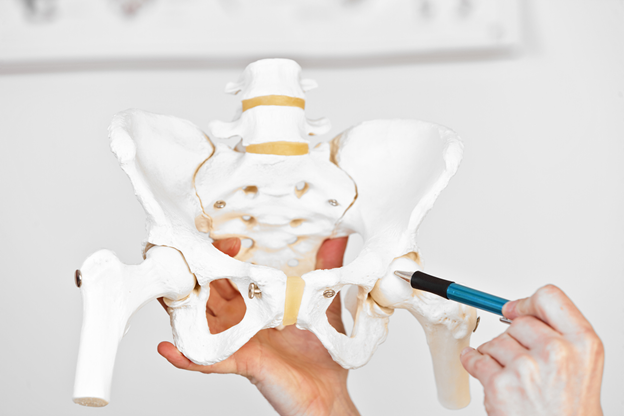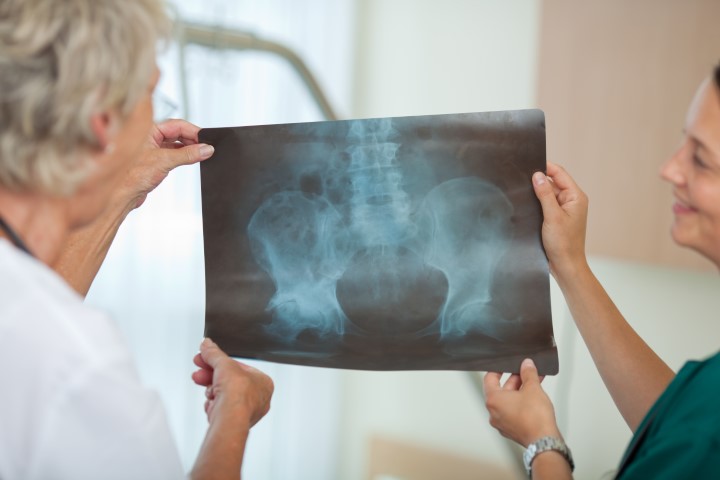What are radiofrequency ablation and coolief radiofrequency treatment?
Musculoskeletal chronic pain can often be treated using oral medications, physical therapy, injections, and definitively through various surgical interventional procedures. However, given the rise in contraindications to conventional pain management strategies, alternative managements were introduced to provide long-lasting pain relief by the means of Coolief Radiofrequency Ablation (RFA).
Radiofrequency ablation is a new and innovative technique used to interfere with pain signals transmitted from the injured joint. Dr Chandrasekaran and his team provide the radiofrequency ablation Melbourne residents can benefit from for the treatment of a variety of conditions including knee pain, shoulder pain, hip pain, and osteoarthritis of various joints. Contact us at your soonest convenience to find out just how we can help.
Radiofrequency ablation (RFA) or radiofrequency denervation is a minimally invasive non-surgical treatment performed to assist in the management of hip pain. Studies show that Coolief radiofrequency ablation provides a reduction of joint pain for 12 months or greater for patients suffering from chronic pain.
Radiofrequency ablation for hip pain involves treating the sensory branches of the femoral and obturator nerves by RFA. RFA will not provide complete pain relief as not all sensory nerves around the hip such as the sciatic nerve are suitable for RFA therapy. Coolief RFA of the hip joint is conducted in the hospital under a general or local anaesthetic as a day procedure (go home the same day).

The probe is injected into the site of pain, usually through a tiny hole.
What are the benefits of Coolief radiofrequency ablation?
There are a number of benefits for the treatment of knee and hip pain using this procedure. Radiofrequency ablation can provide lasting relief for 6 - 12 months following a single treatment session. Additional benefits include:
- Safety - Studies confirm that Coolief radiofrequency ablation (RFA) is a very safe procedure that produces little to no side effects.
- No narcotics - Coolief RFA involves circulating water through the device as it heats the nerves. This can be performed without the need for the use of narcotics.
- Covered by Insurance - Coolief RFA is covered by a number of private insurance companies with available Medicare rebates.
- Rapid recovery - Although recovery times vary from patient to patient, most can expect a full return to work and everyday activities within several days of the procedure. You will be informed of your recommended rest days following your procedure.
- No hospital stay - RFA is performed as an outpatient procedure, ensuring patients can return home on the same day without the need for the hospital admission.
Want to learn more about how this procedure can help tackle your joint pain? Book a consultation today with Dr Chandrasekaran.
Indications for radiofrequency ablation
Coolief radiofrequency ablation can be used to treat several conditions that affect the joints, most notably osteoarthritis of the hip and knee. Patients presenting with the following indications may be suitable for RFA:
- Persistent symptoms from hip and knee osteoarthritis
- People who are experiencing symptoms not considered severe enough to justify hip joint replacement
- People who are medically unfit for joint replacement
- Where a delay in undertaking hip replacement is desirable
- Some cases of residual pain after joint replacement procedures
- Adjunct to the certain hip arthroscopy procedures

Radiofrequency ablation can be used to treat most causes of joint pain.
Who is a good candidate for this procedure?
Chronic joint pain can not only slow you down but also prevent you from carrying out the activities you love. Patients who are not candidates for a surgical procedure may instead opt for radiofrequency denervation. The best candidates included:
- Patients who have mild arthritis and do not qualify for surgery
- Patients who have a high risk of complication following surgery (elderly, obese, those on blood-thinning medication)
- Patients in which alternative conservative treatments have failed but are not candidates for a total arthroplasty
How does the radiofrequency ablation work?
A fine needle probe is placed into specific locations about the hip, where sensory nerve fibres arise from the joint. RFA is conducted using imaging guidance (both X-Ray and ultrasound) to ensure the accurate and safe conduct of the procedure.
An electric current is passed through the RFA probe, which in turn heats the tissue adjacent to the needle tip, disrupting the ability of the genicular nerves to transmit pain signals from the arthritic joint. For Coolief radiofrequency ablation treatment, circulating water passes through the probe to allow for a larger surface area to be treated. In addition, the circulating water helps reduce pain and facilitate recovery.
How long will the effects of the Coolief radiofrequency treatment last?
Various studies were performed to compare the effects of cooled radiofrequency against pulsed radiofrequency. Overall, the studies proved that treatment using cooled radiofrequency lasts for up to 12 months. Coolief RFA can provide substantial symptom relief and functional benefit to those suffering from chronic pain due to osteoarthritis.
How long is the recovery time?
Due to the minimally invasive nature of this procedure, most patients can expect to feel pain relief within 1-2 weeks, allowing them to return to a better quality of life at a much quicker rate than those undergoing surgery.
For most, patients can return to work within 24 - 72 hours of their procedure. A follow-up appointment with Dr Chandrasekaran is recommended to assess your response to treatment and address any concerns you may have.

Our team will explain to you why you are feeling joint pain and describe how RFA will alleviate your discomfort.
What is the cost of radiofrequency ablation in Melbourne?
The cost of Coolief or pulsed radiofrequency ablation varies amongst individuals depending on the location and nature of their pain. In addition, the costs of the consultation, follow-up visit, and the surgical staff will need to be taken into account.
The final cost breakdown will be given to you following your consultation with Dr Chandrasekaran. The factors contributing to your final cost can be subjected to a Medicare rebate, and include:
- $200 consultation fee
- $100 follow-up fee
- $500-1000 surgical fees
Why choose MOATI?
Dr Chandrasekaran is a Melbourne orthopaedic surgeon and a specialist in the treatment of hip and knee injuries. He has completed prestigious fellowships from the United Kingdom and Switzerland, allowing him to hone his expertise from renowned surgeons across the globe.
Dr Chandrasekaran approaches each patient with the same quality of care that he would give to a professional athlete. He is a true believer in allowing all patients to truly perform at their best ability following the treatments which he provides. Our prices are competitive and reflect the comprehensive and effective nature of our treatments, accentuating our aspirations for truly valued treatment.
If you have experienced knee or hip pain and are not a suitable candidate for surgery, then get in touch with us today to find how we can relieve your symptoms without the use of a pain med or surgical procedure.
FAQs
Some of the most frequently asked questions about cooled and pulsed radiofrequency ablation are answered below.
Various studies have proved to show that cooled radiofrequency ablation has a consistent success rate of over 50% in comparison to traditional RFA. The success rates vary depending on the type of pain experienced and the joint which is affected.
Depending on the location of your pain, the entire procedure may take anywhere between 20 - 45 minutes. The numbness will persist for a few hours after due to the effects of anaesthesia.
The procedure is performed under general or local anesthetic, so minimal pain will be felt during the procedure. You may feel some minor discomfort after the procedure which should alleviate over the course of the next few days.
Radiofrequency ablation is carried out in a fully equipped and sterile hospital.
You will be given a set of preoperative instructions following your consultation. These will include the following:
- Patients must fast for 6 hours prior to the procedure
- Stop taking certain medications such as blood thinners (your doctor will go through the details with you prior to your procedure)
- Wear loose-fitting clothing
- Bring your ID, GP referral, health insurance card, and any other necessary paperwork
RFA is completed using the following steps:
- Your skin will be cleaned and sterilized before an IV line is inserted. This helps with the administration of sedatives whilst anaesthetic is injected into the procedure site.
- Once numb, a cannula is inserted into the specified area.
- Using imaging guidance, Dr Chandrasekaran will correct the position of the needle before heating up the nerves,
- The cannula is removed and a bandage is placed onto the injection site.
Some of the side effects felt following RFA include:
- Burning sensation or hypersensitivity at the injection site
- Numbness or tingling at the injection site
These symptoms may only last for a few days and can be treated using over-the-counter pain relief medications and creams. If you experience any major leg pain, swelling, difficulty breathing, or chest pain, then we urge you to contact your local emergency services as soon as possible.
If you have a pacemaker, then please alert one of our staff. RFA can only be performed on those with a pacemaker that can be safely turned off and approved by a cardiologist. Otherwise, RFA can cause the pacemaker to malfunction and result in death.
